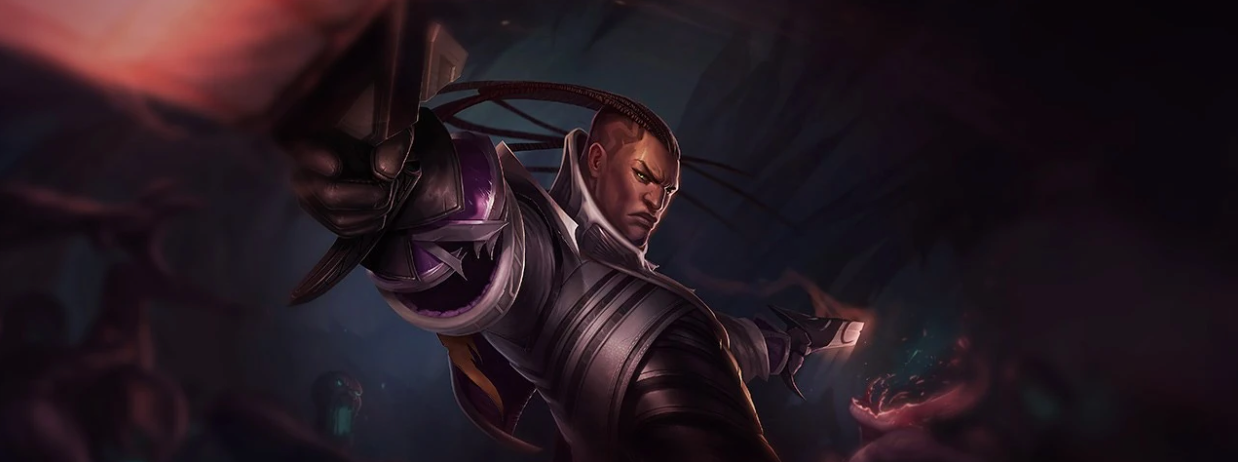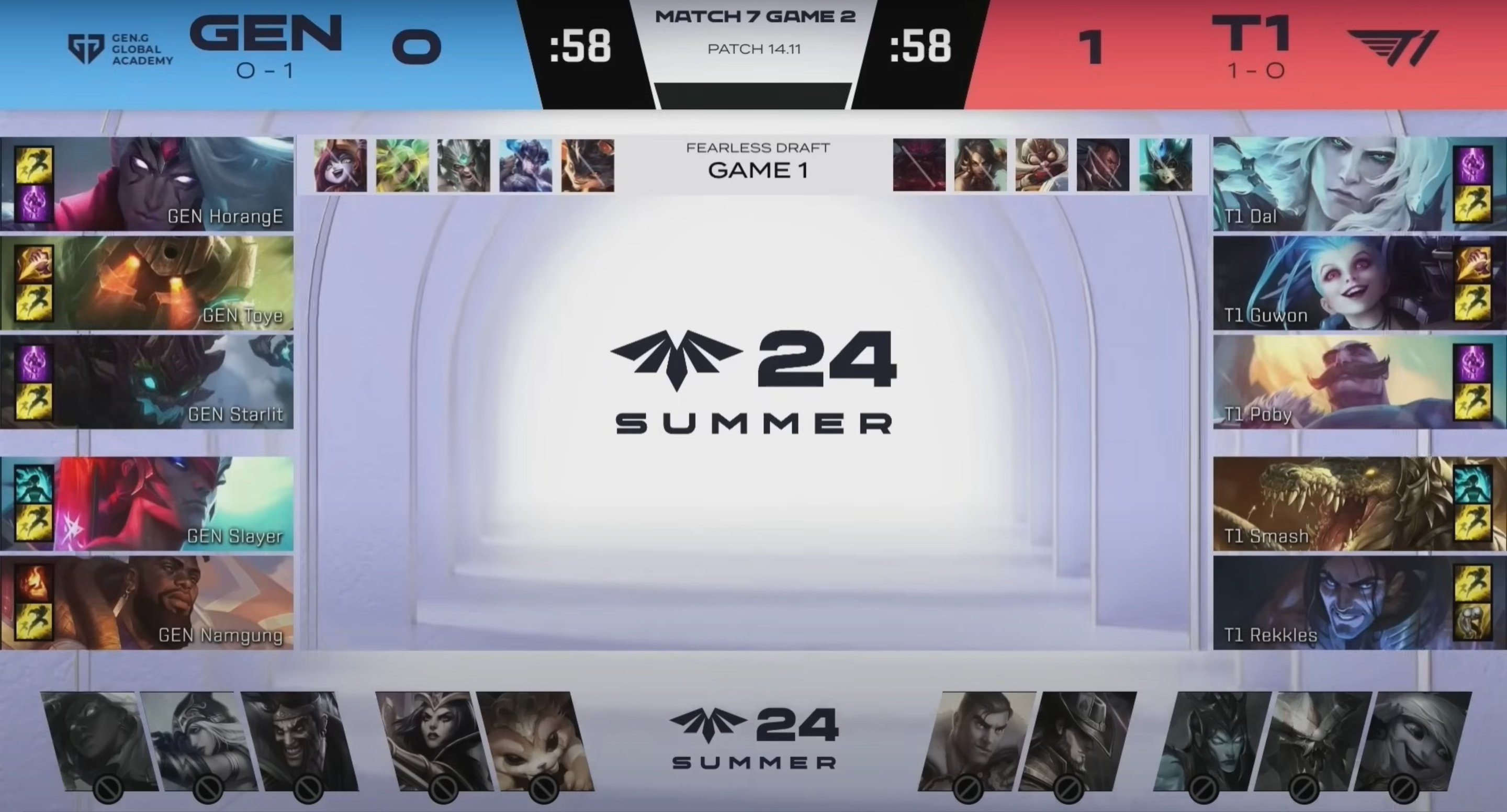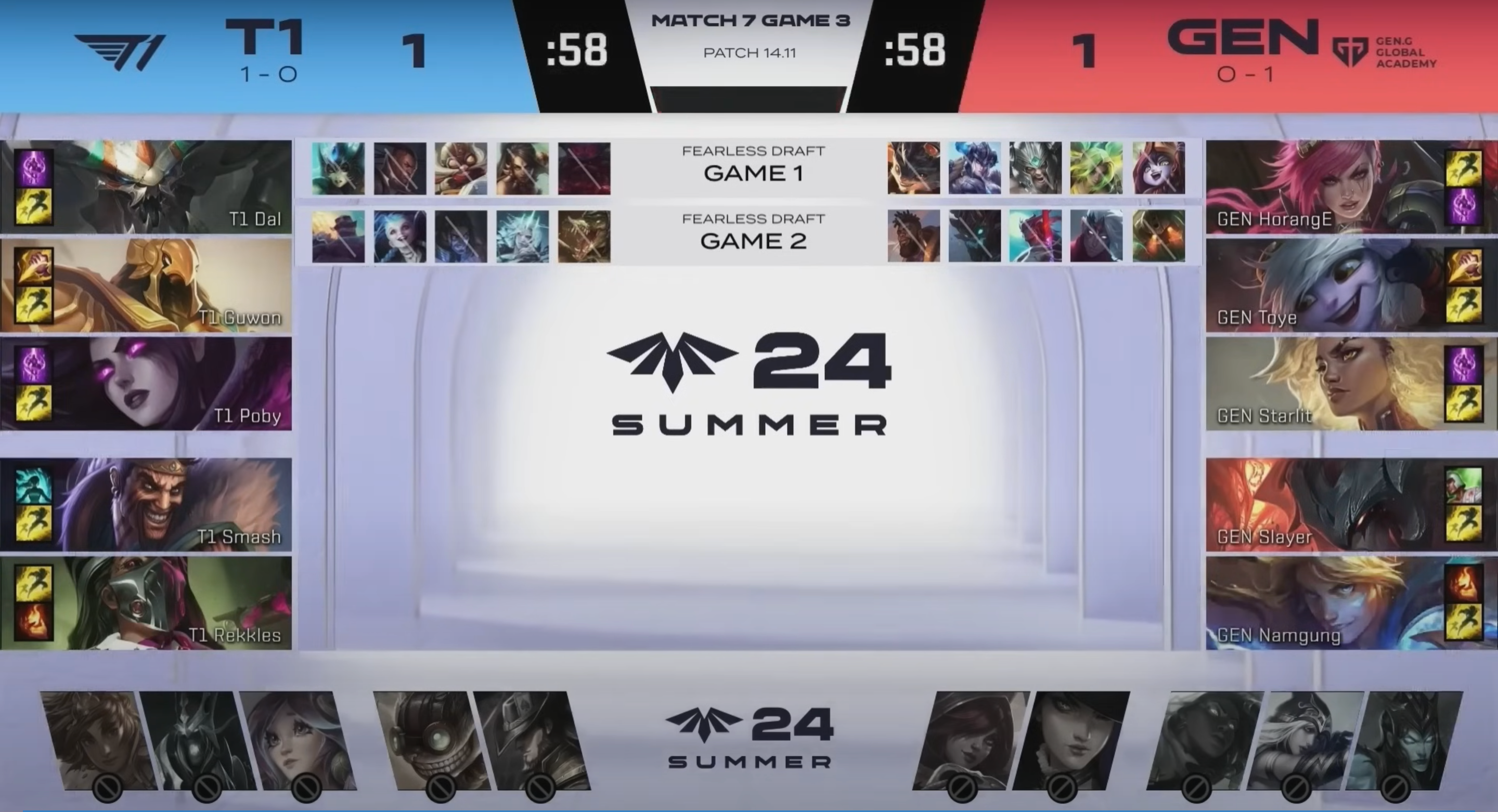Is Fearless the Future? League’s Newest Competitive Format
The Fearless draft format has been taking over the competitive scene in League of Legends, but what is it exactly? Here’s an explanation of the most exciting change in LoL esports.
The Fearless draft format has been taking over the competitive scene in League of Legends, but what is it exactly? Here’s an explanation of the most exciting change in LoL esports.
Competitive League of Legends has had a fairly similar format regarding Pick-Ban and Draft for several years now, with most of the big changes happening on Summoner’s Rift. However, many regions have begun to shake up, introducing a new format, Fearless Draft. Given that this is becoming a popular format in Tier 2 systems and even the LPL, Fearless Draft may be on the cusp of breaking into mainstream competition! This article will break down the format to keep you updated on the potential impact Fearless may make on LoL esports.
The general idea of Fearless Draft is whenever a champion is selected in a best-of series, it will be unpickable for the rest of the series. While some of the specifics haven’t been nailed down, the premise is that the further teams go in a series, the champions will become more unique and varied.
Fearless Draft has already been used in multiple Tier 2 Leagues, including the LCK CL, which just incorporated it for Summer, as well as the NACL, who began implementing it for Bo3s at the start of the year and have now extended that to include playoff Bo5s. However, the most impactful inclusion of Fearless is the LPL, the first of the major regions to work Fearless into their competitive circuit. Now, the LPL is including this only for the Summer Placements stage, but it is nonetheless a monumental change.
There are two versions of Fearless at the moment. “Soft” Fearless is being used by the LPL, which only removes a Champion from the pickable pool of the team that picked it. The disadvantage of soft Fearless is that the losing team can switch sides after a loss, and the drafts could hypothetically be reversed. (For example, a team could lose to Lucian Nami on the Red Side, switch sides, and then take it without fear of it being contested.)

The more common variant of this format is the “Hard” or “Full” Fearless. These remove champions from both teams’ available pools. This leads to the ramifications of Fearless ramping up quite early on in the series. While this may sound intimidating, some leagues then adjust the number of bans allowed to compensate for the sheer number of champions being axed from the draft. The NACL’s solution is that if a series reaches game 4, they are permitted only the first phase of bans. By Game 5, only the 40 champions already picked will be removed, leaving no actual bans for that final game.
Many fans may see the format shakeup and still be left wondering what this will result in for the competitive scene. The obvious point is that this will naturally increase champion diversity as overpowered picks get pulled out of the pool, and this only becomes truer when this ruleset is applied to Bo5s instead of Bo3s. Many champions are exciting to watch, but too much of a good thing can quickly become stale. In a game with nearly 170 champions, no one wants to see the same ten every time.
Players with creative pocket picks and deeper champion pools will naturally be rewarded, which can result in some big surprises late in a series! Take Pyosik’s signature Kindred, a niche pick but one with the potential to carry. Fearless may give him the appropriate angles in the draft for it to be played even more, when the “classic” picks such as Maokai or Sejuani have already been weeded out.

The other advantage is alongside spicier and more exciting picks, classic matchups that are exchanged as handshakes will be less prominent overall. Even if they will inevitably pop up on occasion, gone are the days of Lucian-Nami and Zeri-Lulu every match. Sometimes specific champions are kept out of the limelight because of a particularly bad matchup into a meta-defining pick. Removing the top tier in the initial games opens up a plethora of new creative strategies and innovations on top of that, as players delve deep into their champion pools.
The best way to understand Fearless is to see it in action. This is an example from the LCK CL, featuring T1 Esports Challengers vs. GENG Global Academy. Below you can see the format by game two is adjusted to highlight the removed champions, with popular picks like Rumble, Lucian, or Sejuani all taken out.

T1 vs GEN in LCK CL Game 2 - Courtesy of LCK CL
With GEN pushing T1 to a third game (draft pictured below), you can see some powerful picks slipping through, mixed with some creative champions. Skarner slips through as a powerful opening pick, given that GENG remains insistent on keeping the lane-dominant carries out of Smash’s hands. In response, he and Rekkles pull out Draven & Renata, two incredibly aggressive picks which are normally only favored by specific players. And while GEN seizes Vi early on, Guwon has prepared Morgana, who can protect the team from Vi’s ultimate with her Black Shield. T1 can do this thanks to Nidalee being previously played, giving them the chance to ban the other AP champions which could match Morgana’s clear.

T1 vs GEN in LCK CL Game 3 - Courtesy of LCK CL
Overall, you can see that Fearless doesn’t reinvent the meta, but instead pushes players to make the most of what they have left. Meta champions can still be played, even later on, but you must be selective and plan for unorthodox pairings or counters. Fearless will never make Teemo meta, but it will make it more exciting with just a splash of creativity.
Fearless is admittedly a new and evolving format, and the slight changes between each iteration prove that it is far from perfect at the moment. One critique is that if the game-deciding match is on champions players are less experienced with, the level of gameplay might feel lower compared to playing a more practiced matchup. While it may be exciting for fans, this feeling may be frustrating to players wanting to present their best showing.
Even running back a matchup or finding your footing on the other side of a handshake have been common strategies in the draft phase, which would be eliminated in this context. Sometimes the game just falls apart, but you have faith in a particular pick, and the inability to show that again in a series may be disappointing.
Furthermore, from a logistics perspective, the client and format might get incredibly confusing simply trying to adjust to the number of champions. (By Game 5, 40 Champions will be removed from the pool, without other bans.) However, the more common this format becomes, the more likely this UI issue will be solved.
While these are all fair critiques, it can easily be argued that these are valid tradeoffs for a more diverse and exciting set of champions and watching professional players demonstrate a new level of flexibility.
Fearless Draft is still a new and daunting format, with slow implementation across the world. However, it has potential. The fact that numerous leagues are beginning to experiment with it is promising. Data still needs to be collected on competitive viability and fan sentiment, but don’t be surprised if this gets implemented in more major regions and internationals!